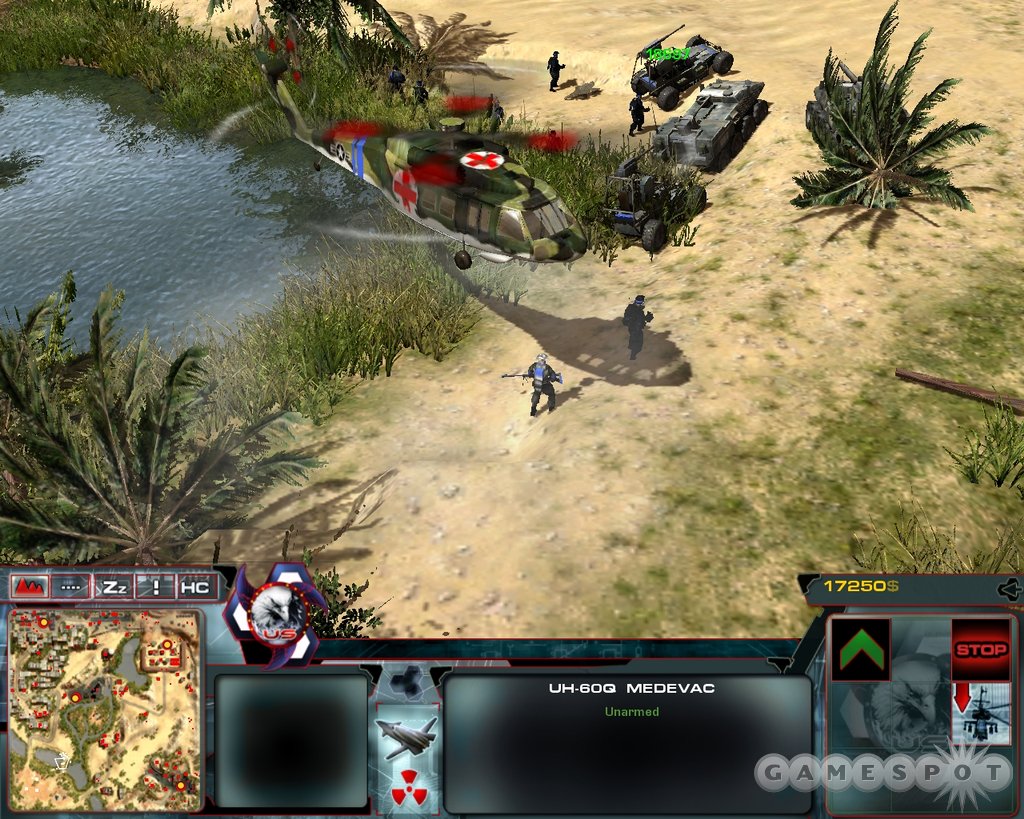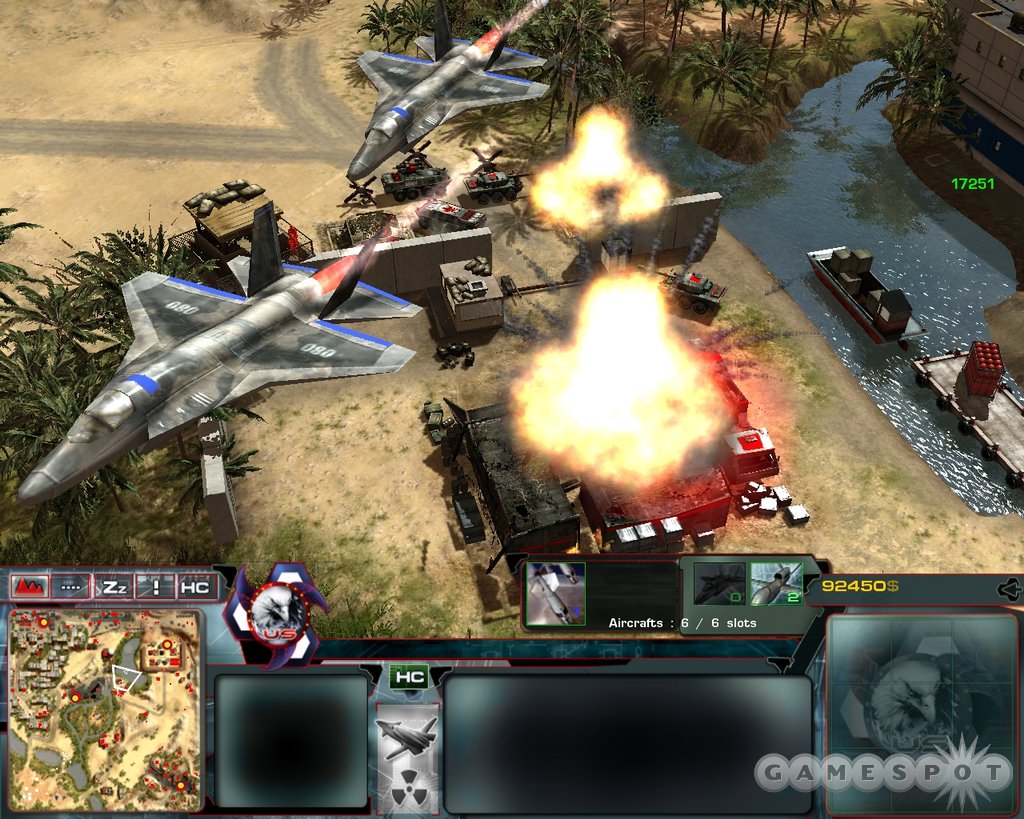Act of War: Direct Action Updated Impressions - Skirmish and Early Campaign
We take an updated look at Eugen Systems' upcoming strategy game, which is based on a near-future conflict that could've come out of a best-selling novel.
Real-time strategy titles weren't always games with intriguing premises that pitted huge, colorful armies against each other on highly distinctive battlefields. There was a time when they all boiled down to little more than collecting resources, building a base, raising an army, and then using that army to pummel your opponent into oblivion. Fortunately, recent strategy games have broken with tradition and still ended up being excellent, and in the future we can look forward to even more promising strategy games that will continue to buck the trend, like the upcoming PC game Act of War: Direct Action from developer Eugen Systems and publisher Atari. Act of War will take place in a near-future conflict that involves top-secret military operations, powerful political factions affecting world events from the shadows, and at least one noted "technothriller" author.

Retired US Air Force officer and novelist Dale Brown collaborated with the development team to create the game's story, and is actually working on a novel that shares the same title (as well as several characters and other elements). Act of War will feature a single-player campaign (fleshed out with a huge body of dialogue and more than a few live-action cinematic sequences), a multiplayer component, and a skirmish mode. We recently had a chance to see both the campaign and skirmish modes in action in a few different demonstration levels that showed off the game's urban environments and spectacular explosions.
In the single-player campaign, you play as a US intelligence officer whose tour of duty is thrown off course by a terrorist attack on the city by the bay, San Francisco. After the city is bombed back to the Stone Age, Uncle Sam initiates "Operation Hedgehog"--a recall of all US troops stationed overseas. Your character is the only member of the administration who sees past what turns out to be a ruse, determining that a separate group is responsible for the problem, and subsequently leading a strike force to Egypt. Possible overtones concerning the United States' current geopolitical situation notwithstanding, your character then pursues his adversary to Russia, and finally into a climactic confrontation at the end of the campaign. The separate group responsible for the attacks is called the "Consortium." This coalition of utility companies seeks a monopoly on the world's energy supply, but is opposed by the US government, and resorts to secretly recruiting mercenaries to stage attacks on US soil as a diversion.
The campaign and skirmish modes both require you to set up a base of operations, though the process of building individual structures is mostly automated. Yes, you'll be collecting resources in the form of oil wells, but these run dry. You'll find a renewable "human" resource in the form of prisoners of war--wounded enemy soldiers who, when captured, will earn you regular ransom payments in cold, hard cash. One campaign map takes place in the deserts of Egypt, which are occupied by enemy forces who must be bombed out with a limited set of air strikes before you can set up your own base of operations and expand outward.
In the campaign, you play mainly as Task Force Talon, an elite group that possesses extremely powerful and cutting-edge weapons and technology. In skirmish, you'll also be able to play as the regular US forces, which are better rounded than Task Force Talon and possess excellent air-strike capability, and as the Coalition, which has access to cheap infantry from the outset of a match--a powerful advantage in the early game.

Both modes will take place in the game's impressive-looking environments. At this point, the deserts of Egypt look like something you might expect from a 3D isometric-overhead-perspective game, but Act of War's urban environments are much more impressive. As it turns out, one of Eugen Systems' founders has a background in architecture, and it shows in the game's vast urban environments, which model neighborhoods lined with individual houses, traffic lights, parked cars, and power lines. As it turns out, the game will actually try to model urban combat, so you'll be able to use environmental objects as cover (you can order infantry to crouch behind parked cars, for instance), and you'll be able to garrison troops inside houses--or order your infantry to climb to the roof for a better vantage point. However, most of Act of War's environmental scenery will be destructible, so hiding behind cars and in buildings won't help much when air strikes are called in.
Act of War already seems to be coming along well, and its good-looking urban environments bode well for a game that will feature urban warfare tactics and other unusual strategies. If the single-player story and multiplayer gameplay can fulfill the potential we've seen so far, Act of War: Direct Action will be a distinctive strategy game in the thrilling world of a technothriller novel. The game is scheduled for release next year.
Got a news tip or want to contact us directly? Email news@gamespot.com
Join the conversation